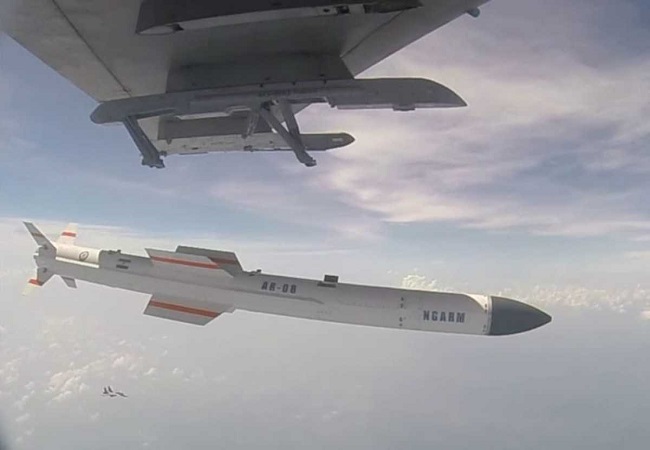New Delhi: India successfully test-fired the ‘Rudram’ Anti-Radiation Missile, developed by Defence Research and Development Organisation (DRDO), from a Sukhoi-30 fighter aircraft off the east coast on Friday.
Defence Minister Rajnath Singh took to Twitter to congratulate DRDO and other stakeholders for the test’s success.
“The New Generation Anti-Radiation Missile (Rudram-1) which is India’s first indigenous anti-radiation missile developed by DRDO for Indian Air Force was tested successfully today at ITR, Balasore. Congratulations to DRDO & other stakeholders for this remarkable achievement,” the Defence Minister tweeted.
The New Generation Anti-Radiation Missile (Rudram-1) which is India’s first indigenous anti-radiation missile developed by @DRDO_India for Indian Air Force was tested successfully today at ITR,Balasore. Congratulations to DRDO & other stakeholders for this remarkable achievement.
— Rajnath Singh (@rajnathsingh) October 9, 2020
As per the official statement, Rudram is the country’s first indigenous Anti Radiation missile for Indian Air Force, being developed by DRDO, and is integrated on SU-30 MkI fighter aircraft as the launch platform, having the capability of varying ranges based on launch conditions.
“It has INS-GPS navigation with Passive Homing Head for the final attack. The RUDRAM hit the radiation target with pinpoint accuracy. The Passive Homing Head can detect, classify and engage targets over a wide band of frequencies as programmed,” it said.
The statement added that the missile is a potent weapon for the Indian Air Force for suppression of enemy air defence effectively from large standoff ranges.
“With this, the country has established indigenous capability to develop long-range air-launched anti-radiation missiles for neutralising enemy Radars, communication sites and other RF emitting targets,” the statement stated further.

